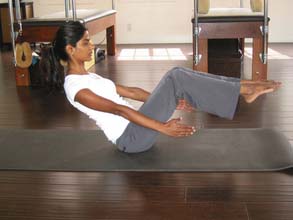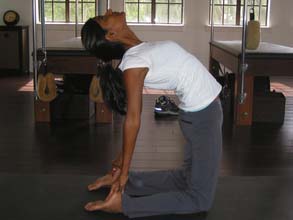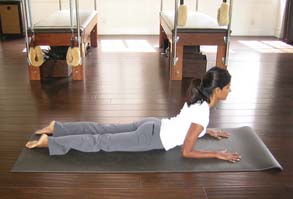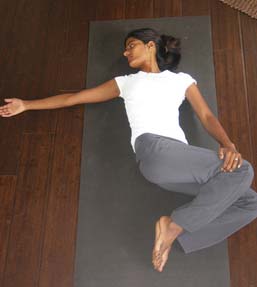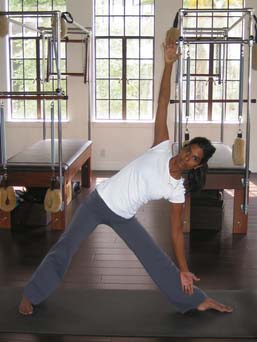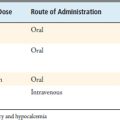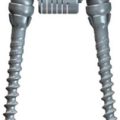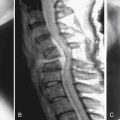23 Yoga and the Aging Spine
Introduction
There are five principles of yoga that form the basis of teachings and disciplined methods for attaining these goals: proper exercise (asanas), proper breathing (pranayama), proper relaxation (savasana), proper diet, and meditation (dhyana). Proper exercise is achieved through asanas or postures that stretch and tone the muscles and ligaments, increase spine and joint flexibility, and ease physical tensions though movement. Proper relaxation relieves muscle tension, conserves energy, and regulates body and mind function. Proper breathing provides for good health, by using all parts of the lung to increase vital oxygen uptake. Yoga breathing exercises control of prana, the life force, which in turn increases energy levels and focuses the mind. Proper diet, consumed in moderation, nourishes the body and mind. Positive thinking and meditation facilitate a peaceful mind, while relaxing the body1.
Clinical and Basic Science
Yoga is classified by the National Institutes of Health as a form of Complementary and Alternative Medicine. There are many well-documented benefits to yoga, including improved flexibility and range of motion, improved posture, increased strength, decreased pain, improved balance, and improved coordination.2 Individuals with an aging spine benefit from yoga because it “promotes a full range of motion, helps to restore flexibility, and improve circulation in muscles and around joints.”2 Yoga therapy also creates a sense of well-being through the release of beta-endorphins, breaks up chronic muscle tension and stress, and prevents osteoporosis through weight-bearing exercises.
Yoga places “an emphasis on standing poses to develop strength, stability, stamina, concentration, and body alignment.” 3 Abnormalities of the deep spinal intrinsic muscles lead to postural and functional imbalances.Yoga therapy goals for the treatment of the aging spine include educating patients on proper body mechanics, correcting underlying internal malfunctions, and preventing recurrence of pain through healthy postural movement patterns. According to yoga philosophy, a person’s age is determined by the flexibility of the spine and not by the number of years lived.4 Yoga benefits the aging spine by imparting flexibility to the spine, firming up the skin, eliminating tension from the body, and strengthening abdominal muscles.
There are many different types of yoga that are practiced throughout the world. Hatha Yoga is what most people in the West associate with the word “yoga,” and is practiced for mental and physical health throughout the West. In the aging spine, individuals should focus their attention on the following types of Hatha Yoga: Iyengar, Ashtanga, Bikram, and Vini. Iyengar Yoga places great attention to detail and precise focus on body alignment with the use of props, such as cushions, benches, blocks or straps. It focuses on the structural alignment of the physical body through the development of postures with use of props to assist individuals that lack flexibility or compensate for injuries. Ashtanga Yoga allows for individual specialization of yoga moves that link breath and movement in flowing exercises. This form of yoga focuses on powerful flowing movements that increase flexibility, balance, and concentration to rehabilitated spines. Bikram Yoga is conducted in a very warm environment, which maintains body heat, making the spine more flexible by allowing the tissues to stretch. Room temperatures average 105°F (40°C), which is not always suitable for individuals with significant heart disease. Vini Yoga involves synchronizing the breath with progressive series of postures, which in turn produce intense internal heat and a profuse, purifying sweat that detoxifies muscles and organs. The flowing movements create heat in the body, which removes toxins and improves tendon, tissue, and muscle flexibility.5
Limited scientific research exists examining the benefits of yoga therapy for individuals with low back pain and aging spines. One study by Vidyasagar et al. looked at the effect of Hatha Yoga therapy in individuals with nonspecific low back pain. Their findings reveal that after completing 9 weeks of yoga therapy, the majority of the selected participants noted pain relief, although the study lacked long-term follow-up and a description on assessment of pain status.6 Another study by Williams et al. looked at chronic low back pain patients who participated in a 16-week Iyengar Yoga therapy. Their results show less pain, less functional disability, and a decrease in pain medication usage after 3 months.7 A more recent study by Tekur et al. examined the effect of short-term intensive yoga therapy versus physical exercise therapy in individuals with chronic low back pain. Their findings show that 7 days of intensive yoga therapy improved spinal flexibility in terms of flexion, extension, and lateral rotation better than physical therapy in individuals with chronic back pain.8 Another study by Sherman et al. compared 12weeks of home yoga therapy with 12 weeks of a home exercise program and educational material. Their findings show that over 3 to 6 months, yoga is more effective than traditional exercises or an educational reference for improving function and pain in individuals with chronic low back pain.9 One study by Greendale et al. showed that elderly women with an excessive curvature of the upper part of the spine may benefit from practicing yoga. They report that specific yoga postures that target the upper back appear to help straighten the spine and restore physical function in patients with hyperkyphosis.10
Yoga-based spinal exercises attempt to correct dysfunctions of head, spine, thoracic cage, and pelvis. Altering leg positions changes the movement at different levels of the spine; flexed legs target the thoracic region, while extended legs target the lumbar segments. Correct posture and proper breathing enhance spinal stability. Yoga therapy exercises require relaxation of the rib cage through complete activation of the diaphragm in inhalation. This will activate the deep spinal stabilizers, including the abdominal wall (core training), diaphragm, multifidi, and pelvic muscles, which will increase abdominal pressure while reducing axial pressure on the vertebral discs and spine. The goal of yoga-based spinal exercises is to restore normal motor function.11 There are certain exercises that can be used for both strengthening and stretching of the spine. It is important to learn these postures correctly, as poor technique may cause injury (Tables 23-1 and 23-2).
| Muscles Involved | Yoga Stretching Exercises | Yoga Strengthening Exercises |
|---|---|---|
| Multifidi/ | Cobra | Extended Triangle |
| Lumbar paraspinals | Extended Triangle | Side Angle Pose |
| Abdominals | Upward Stretch Legs | Cobra |
| Boat | Bow | |
| Oblique/Intercostals | Extended Triangle | Extended Triangle |
| Spinal Twist | Spinal Twist | |
| Abdominal Twist | Abdominal Twist |
| Muscles Involved | Yoga Stretching Exercises | Yoga Strengthening Exercises |
|---|---|---|
| Sternocleidomastoid/ | Spinal Twist | Twisting Poses |
| Cervical paraspinals | Extended Triangle | |
| Camel | ||
| Trapezius | Camel | Bridge |
| Cobra | Shoulder Stand |
As we now know, there are many factors that influence and are associated with degeneration of the spine. In addition to normal aging, high BMI, high LDLc, occupational lifting, and sports activities are associated with degenerative disease.12 These factors can be either controlled or greatly reduced with the multi-pronged benefits of yoga, thereby curbing the progression of the aging spine. Aside from disc degeneration, other factors lend themselves to the overall process of the aging spine. Spinal stenosis, lumbar facet arthritis, and osteopenia/osteoporosis play a role in the spine as it ages. Although no modality can prevent these changes from occurring, the quality of life of the patient is what is primarily at stake. Pain is the obvious result, yet the emotional toll is usually not taken into account. The benefit of yoga has been shown to not only positively influence the physical effects of the aging spine, but also the emotional aspect. The mind and body are connected in many ways. The pain cycle is a double-feedback loop: when a person experiences pain, his or her mood/depression worsens. As a result, he may experience more pain symptoms. This loop continues until the cycle can be broken. Yoga is one modality which can be used to accomplish this goal. Although further studies are needed, it seems “the initial indications are of potentially beneficial effects of yoga interventions on depressive disorders.”13
Therapeutic benefits of Yoga in individuals with an aging spine uses a three headed approach to alleviate back pain, including yoga therapy, breathing, and relaxation. The tenets of yoga therapy include deep stretching postures that stretch and relax the spinal musculature, along with core strengthening that builds up muscles that support the spine (Figures 23-1 through 23-7). Yoga therapy postures also correct structural irregularities in the spine and increase flexibility of the spinal vertebrae. Specific yoga therapy postures that are of benefit to the aging spine include: Trikona Asana (The Triangle), Tada Asana (Mountain Pose), Ek Pada Asana (One-Legged Posture), Bala Asana (Child Pose), Bhujanga Asana (Cobra Pose), and the Parivritta Parshvakona Asana (Half-Revolved-Belly Pose).14 Breathing control techniques can eliminate additional stress that is placed on the spine and back due to irregular respiratory patterns. Meditation and relaxation alleviate back pain not only by removing tension and stress from the muscles, but also by battling pain on a psychological level.
Conclusion
Yoga can benefit individuals with an aging spine in many different ways, if practiced under proper guidance. However, patients can actually do more harm than good by engaging in various yoga poses without a proper understanding of the fundamentals. There is concern that beginners will be unable to obtain correct alignment of the spinal vertebrae and musculature in certain poses without the guidance of an experienced teacher.14 Patients who have been diagnosed with advanced spinal stenosis should avoid extreme extension of the spine, such as back bends in yoga. Patients with advanced cervical spine disease should avoid doing headstands and shoulder stands in yoga. It is extremely important to consult your physician before participating in a yoga regimen. You should also consult a yoga expert (yogi) to teach proper technique and limitations with the aging spine. Yoga therapy movements are fluid in nature. Great care must be taken if an individual experiences pain, which is not part of the normal yoga cycle.
Acknowledgment
The authors thank Neha Shah, DPT, for demonstrating the postures in the illustrations.
1. ABC of Yoga. http://www.abc-of-yoga.com Accessed February 1, 2010.
2. LC. Yoga basics for older adults. Functional. 3(6), 2005.
3. KW, LS, JP. Therapeutic application of iyengar yoga for healing chronic low back pain. Int J. Yoga Therapy. 2003;13:55-67.
4. Yoga for Life. http://www.yoga-for-life.org Accessed February 1, 2010.
5. KB. http://www.spine-health.com/wellness/yoga-pilates-tai-chi/types-yoga Accessed February 1, 2010.
6. Vidyasagar J., Bp, VR, Pr, MJ, KS. Effects of yoga practices in non-specific low back pain. Clin. Proc. NIMS.. 1989;4:160-164.
7. Williams K.A., Petronis J., Smith D., Goodrich D., et al. Effect of Iyengar yoga therapy for chronic low back pain. Pain. 2005;115:107-117.
8. Tekur P., Singphow C., Nagendra H.R., Raghuram N. Effect of short-term intensive yoga program on pain, functional disability and spinal flexibility in chronic low back pain: a randomized control study. J. Altern. Complem. Med.. 2008;14(6):637-644.
9. Sherman K.J., Cherkin D.C., Erro J., Miglioretti D.L., Deyo R.A. Comparing yoga, exercise, and a self-care book for chronic low back pain: a randomized, controlled trial. Ann. Intern. Med.. 2005;143(12):849-856.
10. Greendale G.A., McDivit A., Carpenter A., Seeger L., Huang M.H. Yoga for women with hyperkyphosis: results of a pilot study. Am. J. Public Health. 2002;92(10):1611-1614.
11. Liebenson C. Rehabilitation of the spine. Baltimore: Lippincott Williams & Wilkins; 2007.
12. Hangai M., Kaneoka K., Kuno S., Hinotsu S., et al. Factors associated with lumbar intervertebral disc degeneration in the elderly. Spine J.. 2008;8(5):732-740.
13. Pilkington K., Kirkwood G., Rampes H., Richardson J. Yoga for depression: the research evidence. J. Affect. Disorders. 2005;89(1-3):13-24.
14. Get rid of your lower back pain with the help of yoga. www.yogawiz.com Accessed February 1, 2010.

